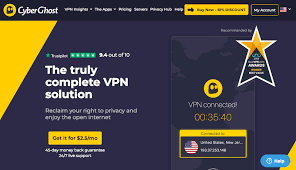This Is How VPNs Secure Your Information
Encryption is one of the main security features of a VPN. When you are connected to a VPN service, all your Internet traffic & communication passes through a secure channel. This is what keeps your information confidential and secure. If you need to use a trusted VPN service in Canada, we highly recommend you to check out the BEST VPN CANADA.
Each vpn has different protocols and their level of security. Here’s an example:
Internet Protocol Security (IPSec)
IPSec authenticates Internet sessions and encrypts data during connection. It has two modes, they are tunneling and transport, so data is protected during transfers among different networks. It may be combined with different protocols of security to improve data protection.
Layer 2 Tunneling Protocol (L2TP)
L2TP is one of the other protocols that can be used with IPSec. Between two points, it creates a channel where it will handle the encryption of data that is being transmitted.
Point-to-Point Tunneling Protocol (PPTP)
This is a complete protocol that is capable of encrypting and tunneling data at the same time.
Additionally, there is a no-logging policy. This is something to note, given that not all VPNs have a no-logging policy. Logs are data that contain records of the history of your internet activity. If your logs aren’t stored, VPN service providers can’t sell them or handle them to government or law enforcement officials, right?
If the VPN has a no-logging policy, this will be clearly stated on its website. For example, PureVPN, which is one of the VPNs that doesn’t keep logs.
Most VPNs may have their processes when they are being used. However, the basic understanding of VPN usage is to be installed as a software in a certain device. Configuration can be done by simply entering the VPN username & password when you launch the software, but some VPNs offer more options.
These offers can be in the form of selecting the security protocol you wish to use or selecting manually the server location you wish to use.

